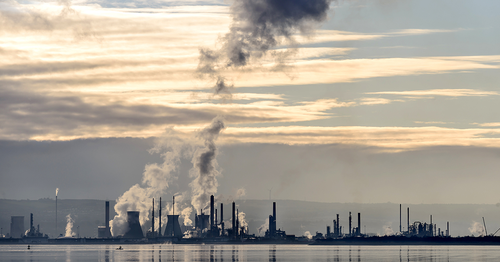News Highlight
Gross Domestic Climate Risk Report 2023 released: 9 Indian states among top vulnerable places in the world.
Key Takeaway
- According to a new rating announced on February 20, nine of the 50 places in the globe experiencing significant climate risk to a weak physical infrastructure is in India.
- The paper, titled “Gross Domestic Climate Risk,” was issued by the Cross Dependency Initiative (XDI).
- It is a global organisation specialising in climate risk analysis for regions, banks, and businesses.
Gross Domestic Climate Risk Report 2023
- About
- The report is released by Cross Dependency Initiative (XDI).
- The index evaluated the global ‘Physical climate risk’ to built environments such as buildings and properties in 2050 across 2,600 states and provinces.
- The index allocated each region an Aggregated Damage Ratio (ADR).
- It represents the damage to a region’s built environment in 2050.
- A high ADR indicates greater danger.
Key Findings of the Report
- Vulnerabilities
- Risk originates from 8 climate change Hazards:
- Riverine and surface flooding, coastal inundation (coastal flooding), extreme heat, forest fire, soil movement (drought-related), extreme wind and freeze-thaw.
- Riverine and surface flooding, or flooding combined with coastal inundation, are the main threats to developed infrastructure worldwide.
- Risk originates from 8 climate change Hazards:
- Findings about India
- High-risk provinces will have an average 110% rise in damage risk by 2050 under high emissions scenarios such as the Representative Concentration Pathway (RCP) 8.5.
- With a temperature rise of 0.8 degrees Celsius, India’s 27 states and more than three-quarters of its districts are now severe event hotspots, accounting for a 5% loss in GDP.
- If global warming is not limited to 2-degree thresholds, climate-vulnerable states in India will lose more than 10% of their gross state domestic product (GSDP).
- Among other Indian states, Bihar, Assam, and Tamil Nadu had the highest ADR.
- Assam, in particular, would see the greatest rise in climate risk: up to 330% by 2050.
- Since 2011, Assam has seen an exponential increase in flood disasters, including 15 of India’s 25 most vulnerable districts to climate change.
- 11 of Maharashtra’s 36 districts were identified as “particularly vulnerable” to extreme weather events, droughts, and diminishing water security.
Steps Taken by India regarding Climate Change
- Reforms in the Transport Sector
- With the Accelerated Adoption and Manufacture of (Hybrid &) Electric Vehicles Plan, India hastened its e-mobility transition.
- A voluntary car scrapping policy to phase out old and inoperable automobiles supplements existing programmes.
- India’s Support of EVs
- India is one of a few countries that support the global EV30@30 initiative.
- It aims for at least 30% new electric vehicle sales by 2030.
- India’s “Panchamrit” support of five factors for climate change at the UNFCCC COP26 in Glasgow is a commitment to the same.
- Hydrogen Energy Mission
- Concentrate on producing hydrogen using renewable energy sources.
- Perform, Achieve, and Trade (PAT)
- It is a market-based system for increasing and incentivising energy efficiency in major energy-intensive enterprises.
- The Pradhan Mantri Ujjwala Yojana
- It has aided 88 million homes in transitioning from coal-fired cooking fuel to LPG connections.

Conclusion
- India established its global thought leadership by founding 21st-century institutions like ISA and CDRI.
- By encouraging structural, technological, and financial breakthroughs from the fringes to the mainstream, these institutions can help India become the world’s climate solutions hub.
Pic Courtesy: Global Finance Magazine
Content Source: Hindustan Times



